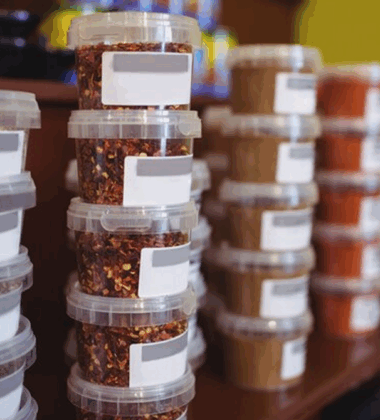Imagine a world where your dinner is grown in a lab, your snacks are 3D-printed, and your grocery list is curated by artificial intelligence. This isn’t science fiction—it’s the future of the food industry, and it’s unfolding right before our eyes.
The Global Products Expo, set to take place from June 26–28, 2025, at the New Jersey Expo Center, is at the forefront of this transformation. With industries like organic snacks, specialty foods, superfoods, and plant-based dairy taking center stage, the expo is showcasing the cutting-edge technologies that are reshaping how we produce, distribute, and consume food.
In this educational deep dive, we’ll explore the emerging technologies driving the future of the food industry and what they mean for consumers, businesses, and the planet.
1. Lab-Grown and Cultivated Foods
Lab-grown foods are no longer a futuristic concept—they’re here, and they’re revolutionizing the way we think about meat, dairy, and even seafood.
What It Is:
Lab-grown foods are produced by cultivating animal cells in a controlled environment, eliminating the need for traditional farming.
Why It Matters:
- Sustainability: Lab-grown foods require fewer resources like water and land compared to traditional agriculture.
- Ethical Eating: These products offer a cruelty-free alternative to conventional meat and dairy.
- Market Potential: Companies like Memphis Meats and Mosa Meat are leading the charge, with products expected to hit shelves by 2025.
2. 3D-Printed Foods
3D printing isn’t just for plastics and metals—it’s making waves in the food industry:
What It Is:
3D printers use edible ingredients to create customized foods, from intricate desserts to nutrient-packed meals.
Why It Matters:
- Personalization: 3D printing allows for tailored nutrition, catering to individual dietary needs and preferences.
- Sustainability: The technology minimizes food waste by using precise amounts of ingredients.
- Innovation: Restaurants and food brands are using 3D printing to create unique, Instagram-worthy dishes.
3. AI and Machine Learning in Food Production
Artificial Intelligence is transforming every aspect of the food industry, from farm to fork:
What It Is:
AI algorithms analyze data to optimize farming, predict consumer trends, and streamline supply chains.
Why It Matters:
- Precision Agriculture: AI-powered tools monitor crop health, soil conditions, and weather patterns to maximize yields.
- Personalized Nutrition: AI apps create customized meal plans based on individual health data.
- Efficient Supply Chains: AI predicts demand, reduces waste, and ensures fresher products on store shelves.
4. Blockchain for Food Traceability
Blockchain technology is bringing unprecedented transparency to the food supply chain:
What It Is:
Blockchain is a decentralized digital ledger that records every step of a product’s journey, from farm to table.
Why It Matters:
- Food Safety: Blockchain enables quick identification of contaminated products, reducing the risk of foodborne illnesses.
- Consumer Trust: Shoppers can verify the origin and authenticity of their food with a simple scan of a QR code.
- Sustainability: Blockchain verifies claims like “organic” or “fair trade,” ensuring ethical practices.
5. Alternative Proteins
The demand for plant-based and alternative proteins is skyrocketing, driven by health and environmental concerns:
What It Is:
Alternative proteins include plant-based meats, insect protein, and algae-based products.
Why It Matters:
- Sustainability: Plant-based proteins require fewer resources and produce fewer emissions than traditional livestock farming.
- Health Benefits: Many alternative proteins are lower in saturated fats and free from cholesterol.
- Market Growth: Companies like Beyond Meat and Impossible Foods are leading the charge, with the global plant-based protein market expected to reach $162 billion by 2030.
6. Smart Packaging
Smart packaging is transforming how we store, track, and consume food:
What It Is:
Smart packaging uses sensors, QR codes, and other technologies to monitor freshness, provide nutritional information, and enhance convenience.
Why It Matters:
- Food Safety: Sensors detect spoilage and alert consumers before food goes bad.
- Sustainability: Smart packaging reduces waste by extending shelf life and using eco-friendly materials.
- Consumer Engagement: QR codes provide interactive content, like recipes or brand stories.
7. Vertical Farming and Urban Agriculture
As urbanization increases, vertical farming is bringing agriculture closer to consumers:
What It Is:
Vertical farms grow crops in stacked layers, often in urban environments, using controlled conditions like LED lighting and hydroponics.
Why It Matters:
- Local Sourcing: Vertical farms reduce the need for long-distance transportation, ensuring fresher produce.
- Sustainability: These farms use less water and land compared to traditional agriculture.
- Year-Round Production: Controlled environments allow for consistent harvests, regardless of weather conditions.
8. The Role of Robotics
Robots are taking over tasks in the food industry, from harvesting crops to preparing meals:
What It Is:
Robotic systems automate repetitive tasks, improving efficiency and reducing labor costs.
Why It Matters:
- Efficiency: Robots can harvest crops, sort produce, and package goods faster and more accurately than humans.
- Consistency: Automated systems ensure uniform quality in food production.
- Innovation: Robots are even being used in restaurants to cook and serve meals.
9. The Future is Here
The food industry is undergoing a technological revolution, driven by the need for sustainability, efficiency, and innovation. From lab-grown meats to AI-powered supply chains, these emerging technologies are reshaping how we produce, distribute, and consume food.
Ready to explore the future of food? Join us at the Global Products Expo and discover the latest innovations shaping the food industry. Don’t miss out on this incredible opportunity to connect, learn, and grow.
By embracing these technologies, you’ll ensure your business stays ahead in the evolving food landscape. See you at the New Jersey Expo Center, where the future of food comes to life!





